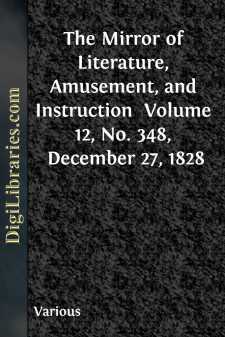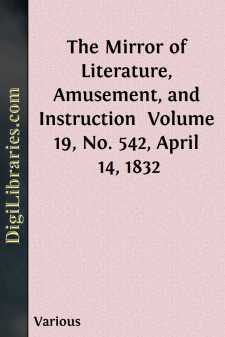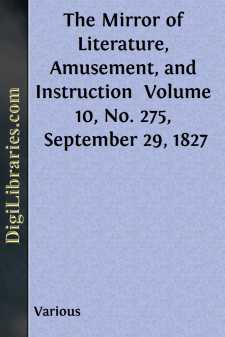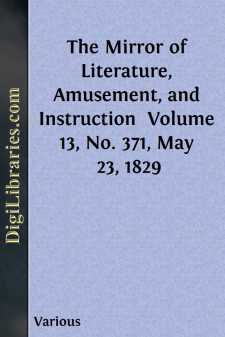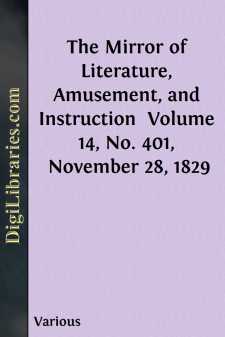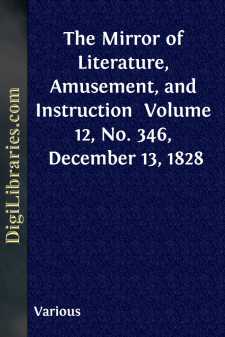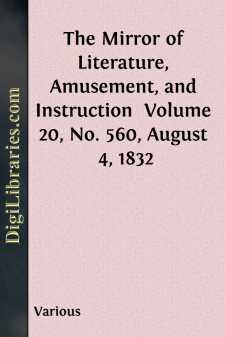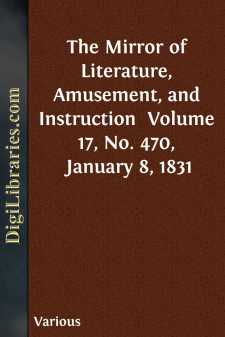Categories
- Antiques & Collectibles 13
- Architecture 36
- Art 48
- Bibles 22
- Biography & Autobiography 813
- Body, Mind & Spirit 142
- Business & Economics 28
- Children's Books 14
- Children's Fiction 11
- Computers 4
- Cooking 94
- Crafts & Hobbies 4
- Drama 346
- Education 46
- Family & Relationships 57
- Fiction 11829
- Games 19
- Gardening 17
- Health & Fitness 34
- History 1377
- House & Home 1
- Humor 147
- Juvenile Fiction 1873
- Juvenile Nonfiction 202
- Language Arts & Disciplines 88
- Law 16
- Literary Collections 686
- Literary Criticism 179
- Mathematics 13
- Medical 41
- Music 40
- Nature 179
- Non-Classifiable 1768
- Performing Arts 7
- Periodicals 1453
- Philosophy 64
- Photography 2
- Poetry 896
- Political Science 203
- Psychology 42
- Reference 154
- Religion 513
- Science 126
- Self-Help 84
- Social Science 81
- Sports & Recreation 34
- Study Aids 3
- Technology & Engineering 59
- Transportation 23
- Travel 463
- True Crime 29
Sort by:
by:
Various
PONTEFRACT CASTLE, 1648. Pontrefact, a place of considerable note in English history, is situated about two miles south-west from Ferrybridge, nine miles nearly east from Wakefield, and fifteen miles north-west from Doncaster, in Yorkshire. The origin of the town is unknown; and the etymology of its name has been a matter of dispute, in which figures a monkish legend ascribing the name of Ponsfractus,...
more...
by:
Various
Barber's Barn, Hackney. The engraving represents a place of historical interest—an ancient mansion in Mare-street, Hackney, built about the year 1591, upon a spot of ground called Barbour Berns, by which name, or rather Barber's Barn, the house has been described in old writings. In this house resided the noted Colonel John Okey, one of the regicides "charged with compassing and...
more...
by:
Various
CASTLE OF THE SEVEN TOWERS AT CONSTANTINOPLE 1. Triumphal Arch of Constantine. 2. First Tower of the Pentagon. 3. First Marble Tower. 4. Second Marble Tower. 5. Angle of the Pentagon with the fallen Tower. 6. Double Tower. 7. Dedecagonal tower. 8. Square Tower of entrance to the Prison. 9. Round Tower falling to decay. 10. House of the Aga, &c. 11. Garden of the Aga's House. 12. Cemetery of...
more...
by:
Various
THE BEULAH SALINE SPA, NORWOOD. Our attention has been invited to the Beulah Spa by a brochure lately published, from the very competent pen of Dr. George Hume Weatherhead; the details of which will be read with interest by all who are in quest of "healing founts." "The Spa," observes Dr. Weatherhead, "has long been resorted to by the country people of the neighbourhood, who, from...
more...
by:
Various
KEW PALACE. Innumerable are the instances of princes having sought to perpetuate their memories by the building of palaces, from the Domus Aurea, or golden house of Nero, to the comparatively puny structures of our own times. As specimens of modern magnificence and substantial comfort, the latter class of edifices may be admirable; but we are bound to acknowledge, that in boldness and splendour of...
more...
by:
Various
The Fortune Playhouse The Engraving represents one of the playhouses of Shakspeare's time, as the premises appeared a few years since. This theatre was in Golden Lane, Barbican, and was built by that celebrated and benevolent actor Edward Alleyn, the pious founder of Dulwich College, in 1599. It was burnt in 1624, but rebuilt in 1629. A story is told of a large treasure being found in digging...
more...
by:
Various
The Siamese Twins. The Engraving is an accurate sketch of this extraordinary lusus naturae, which promises to occupy the attention of the whole Town, and has already excited no ordinary curiosity among all ranks of the scientific and sight-loving. Deviations from the usual forms of nature are almost universally offensive; but, in this case, neither the personal appearance of the boys, nor the...
more...
by:
Various
OLD COVENT GARDEN. The notoriety of Covent Garden is of too multifarious a description to render the above illustration uninteresting to either of our readers. It is copied from one of Hollar's prints, and represents the Garden about the time of Charles II., before its area had been polluted with filth and vegetable odours. The spot was originally the garden belonging to the abbot of Westminster,...
more...
by:
Various
THE ELEPHANTS IN THE ZOOLOGICAL GARDENS, REGENT'S PARK.THE ELEPHANT, IN THE ZOOLOGICAL GARDENS, REGENT'S PARK.The annexed Engraving will probably afford the reader a better idea of the Zoological Gardens, than did either of our previous Illustrations. It is indeed a fair specimen of the luxurious accommodation afforded by the Society for their animals; while it enables us to watch the habits...
more...
by:
Various
Few places in Britain can boast of higher antiquity than the city of Chichester. Its origin is supposed to date back beyond the invasion of Britain by the Romans. It was destroyed towards the close of the fifth century, by Ella, but rebuilt by his son, Cissa, the second king of the South Saxons, who named it after himself, and made it the royal residence and capital of his dominions. Chichester, as may...
more...



